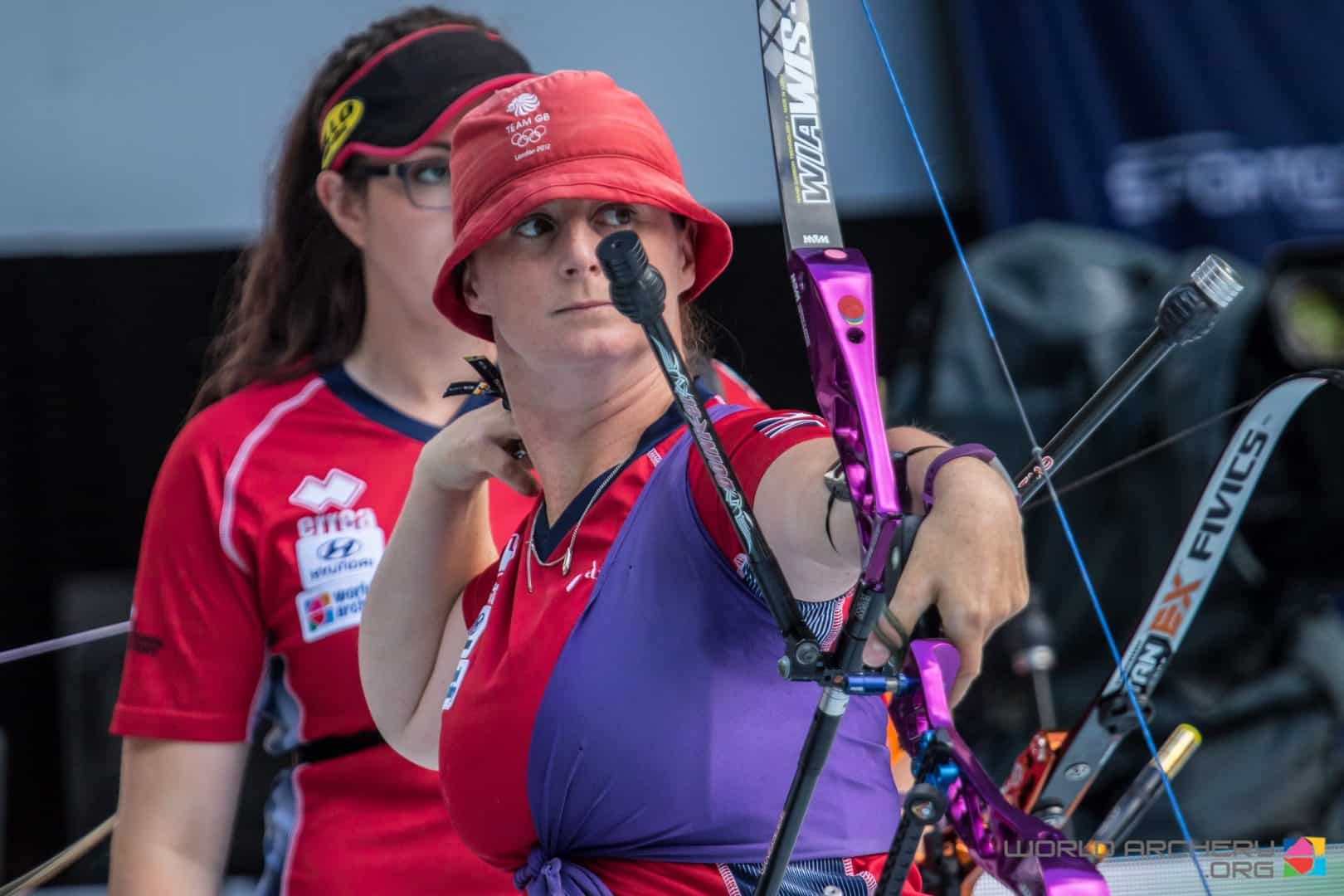Setting goals for the whole year can be confusing, Naomi Folkard, Lizzie Warner, and Cameron Donaldson gave us an insight into how they set goals.

At the beginning of the year, I write down the goals I want to achieve for the year ahead and plan them with my coach. I split them into short, medium and long term goals so that I always have something that I'm working towards.
My long-term goals are for a lot longer than the year ahead, but my shorter goals help me work towards them.
I also make sure my goals aren't all performance-based. I make sure to set technical, mental and physical goals to ensure that I can try and improve in every aspect of my training.
Then, once I've written down all I want to achieve for the following season I can plan my training to help me achieve them.
Lizzie Warner, Ambition Squad 2020.
Photo courtsey of World Archery - World Youth Championships 2019.
When I start looking to the new year and what we are looking to achieve between myself and my coach Alberto Zagami we sit down to take a look at the season's competitions.
We try to prioritise the competitions which will be the most competitive to my skill set.
We choose the competitions for the year and I train towards those competitions.
I also have different goals for my form, strength, posture, bow arm, release all these things are my goals for constant improvement.
Another goal for me is mental strength getting ready for the big competitions & selection shoots leading to international representation of my country.
My goals can change throughout the season depending on the current situations.
Cameron Donaldson, Ambition Squad 2020.
Photo courtsey of Archery GB - National Tour Final 2019.
Setting goals can help progression mentally, as well as physically. There are three main types of goals;
Outcome goals are specific results-driven goals, usually used in competition. Performance goals are to make improvements over a set period of time in regard to your performance. Finally, process goals, these are attributes a competitor should be concentrating on when carrying out a specific skill.
Another way of setting goals is by using S.M.A.R.T. goals. Using this method can make goal setting feel (and be) easier to achieve.
S - Specific
M - Measurable
A - Achievable
R - Relevant
T - Time-Based
Ensuring that each goal you are setting is specific to you and the task at hand, it's clear and to the point. You can measure the goal against previous performance or a standard. It is achievable, you know that you can achieve the goal, it is realistic and within the archer's capability and capacity.
The goal needs to be relevant to you, along with aligning with your other goals. The last part is to create a goal that is time-based, give yourself a time limit for completion. The time limit you give on a goal depends if it is short or long term.
You must also remember that goals are not set in stone. Do not get angry at yourself if you don't achieve the goal in the time frame that you've given yourself, evaluate why this has happened, did you set the time limit too short? Was it truly achievable?
Make sure, as you're setting the goals for the year, to ask yourself why'. Why am I making this my goal? Why do I want to achieve this? Why is this important to me? Your goals should be a challenge, making your archery journey as exciting as you want it to be!
We spoke to Naomi Folkard about examples of S.M.A.R.T. goals.
Yesterday I successfully kept my head still during 70/120 shots. Today I will do better than that. I will keep my head still by putting �"head into my mental shot routine, and I will keep tally of successes immediately after every shot.
Since I have a competition at the weekend where I want to test how resilient my mental routines are, I set myself a tough but exciting outcome goal of 648. This is an average of 54 per end. Today I will shoot and score the same round with the goal of achieving 75% of ends of 54 or above. Before and during the round I will practise my mental routines.
I want my release to be stronger as it has been on the soft side recently, so in the next 4 weeks I will work really hard on fixing it. I will shoot about 100 arrows, 5 times per week, that's a total of 2000 shots to make this happen. On alternate days I will shoot with my formmaster 3 ends on and 3 ends off. 1 days a week I will �"grip and rip for the whole session, I know this will feel like I have no control but that's ok. 1 day a week I will focus on the string being strong through the chin and pull past by thinking about the crease between the finger and thumb aiming for the ear as I come to full draw. I will also do this on the formmaster days. On alternate days I will also do reversals for half an hour.
This last goal is a medium term goal and it is well worth referring to your copy of Lanny Basham's �"With Winning in Mind for the chapter about Directive Affirmations to change your self-image as you go along.
Photo courtesy of World Archery - World Championships 2019.